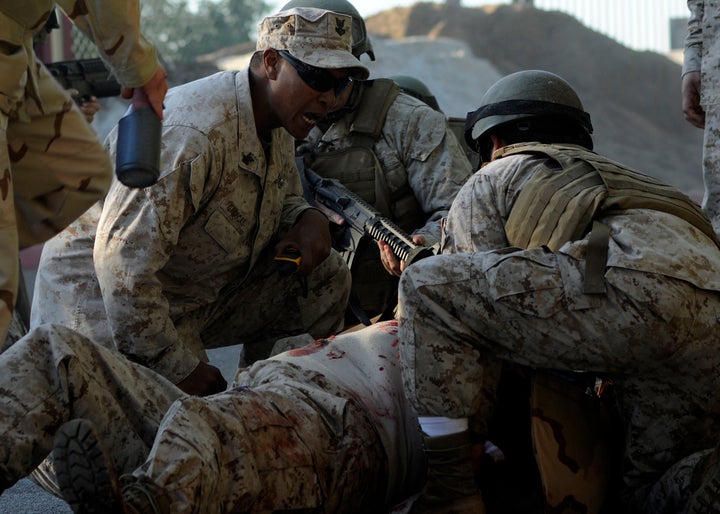
According to new data released Wednesday, more than 1,500 Americans have lost a leg or arm in combat in Iraq or Afghanistan, and hundreds have suffered the amputation of multiple limbs.
The Huffington Post reported Oct. 25 that the number of American battle wounded has passed 50,000, a grim milestone of more than a decade of war and a reminder of the war's enduring human cost. On Wednesday, the wounded toll stood at 50,159, according to Defense Department data.
Since 2001, when the war in Afghanistan was launched in response to the 9/11 terrorist attacks, 5,225 American military personnel have been killed in action in Afghanistan or Iraq.
The casualty statistics only begin to suggest the suffering of the injured and of the families of those killed or injured. Because so many of the wounded are in their early 20s, they and their families face a lifetime during which the medical care required may be costly, intense and constant. Amputees, for example, must be fitted for new prosthetics every few years.
The roster of wounded, including those with physical and psychological wounds, explains why the Department of Veterans Affairs is rushing to expand its medical and mental health services for the new generation of veterans.
According to a 10-month investigation by The Huffington Post, more than 16,000 Americans have been taken from the battlefield with severe, disabling wounds.
The new casualty data, released by the U.S. Army Surgeon General's Office in response to a request by The Huffington Post, shows a dismaying range of injuries. Overall, 253,330 servicemen and women have suffered traumatic brain injury on the battlefield or elsewhere, including 3,949 with penetrating head wounds and 44,610 with severe or moderate brain injury.
In the Army alone, 73,674 soldiers have been diagnosed with post-traumatic stress disorder as a result of their combat experience. The Army also has diagnosed 30,480 soldiers who returned from combat with traumatic brain injury, often caused by one or more severe blows to the head or exposure to a concussive blast.
Among the combat wounded from all the military services are 1,572 patients with major limb amputations, including 486 wounded troops with multiple amputations. These numbers do not include those who suffered the loss of fingers or toes.
Most of the amputees, 83 percent, have lost one or both legs, mostly from the blast of improvised explosive devices. These deadly homemade bombs are also the cause of most of the genital wounds suffered by 1,410 U.S. troops.
The data released Wednesday indicates that 2,542 servicemen and women have suffered traumatic burns; 142 have lost at least one eye, and five lost both eyes in combat.
The financial cost of caring for the wounded is dwarfed by the emotional cost, of course. But in 2008, Harvard economist Linda Bilmes has estimated the lifetime cost of caring for the war wounded to be between $600 billion and $900 billion. Since then, the data she has gathered indicate that the cost will rise, she told The Huffington Post Wednesday.
Although U.S. military operations in Iraq ended in December 2011, some 66,000 U.S. military personnel are still engaged in Afghanistan. President Barack Obama has pledged to withdraw all U.S. combat troops by the end of 2014, but U.S. and Afghan officials expect that some American military presence will continue, with trainers and special operations forces.
